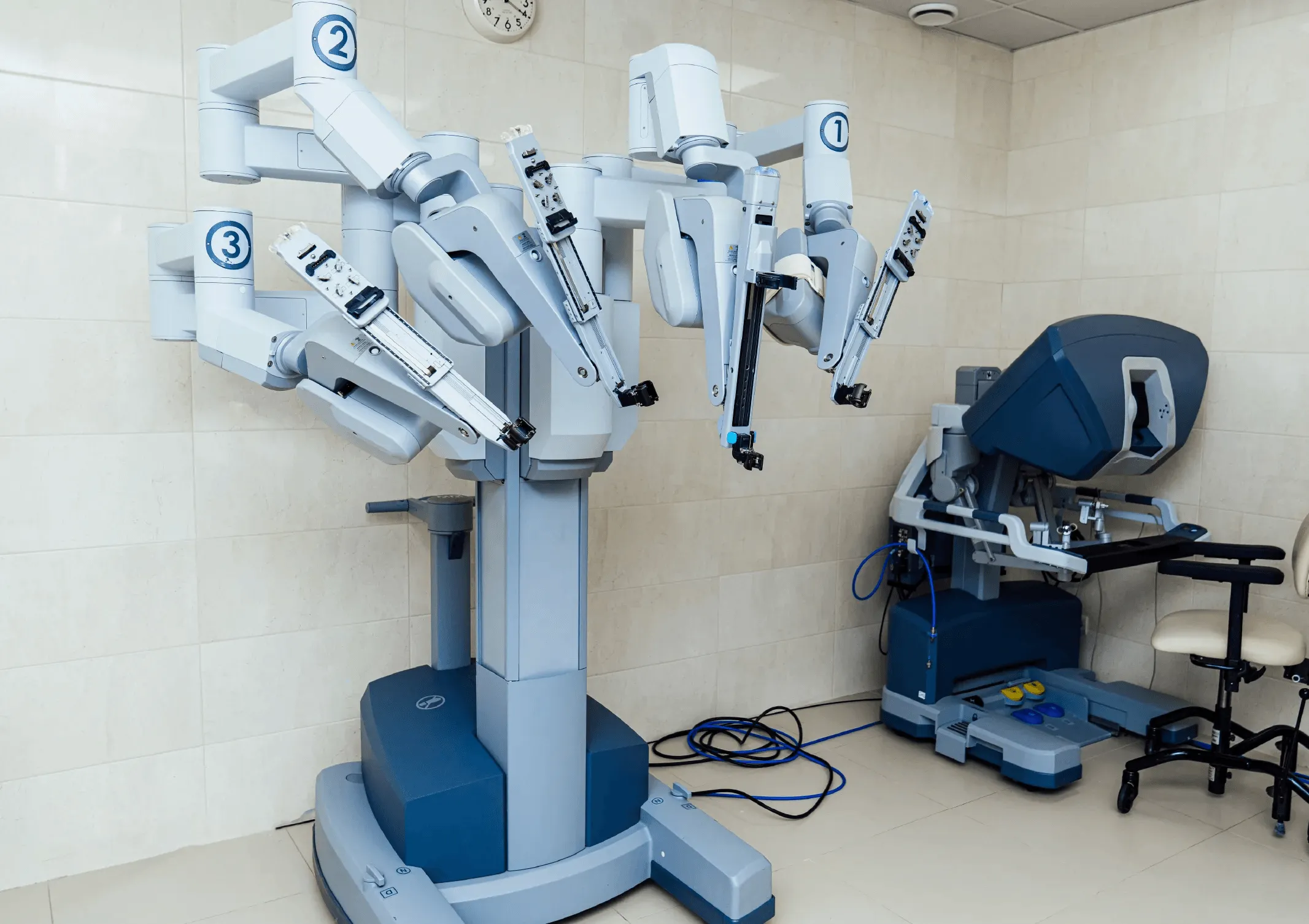The present-era breast cancer treatment involves retaining as much of the original breast tissue as possible. The current treatment best practices around breast cancer surgery are focused on having a functional breast after treatment while preserving aesthetics. However, this desired functionality of the breast depends on the amount of original skin and nipple-areola complex (NAC) preserved after cancer removal. The surgical procedure is termed as Skin Sparing / Nipple Sparing Mastectomy (SSM/NSM). It can end up completely removing malignant breast tissues or partially removing the suspicious malignant tissue with adequate margins. This calls for precision and technique best applied using robotic-assisted breast surgery in India, which provides reduced blood loss, faster recovery, and superior cosmetic results.
This is a minimally invasive breast cancer surgery technique which utilises robotic technology to perform procedures with increased precision and control. It involves using a da Vinci robotic system, controlled by a surgeon, to assist in the removal of breast tumours or in breast reconstruction procedures. This approach offers benefits such as smaller incisions, reduced scarring, preservation of skin flap vascularity, and potentially faster recovery times compared to conventional mastectomy.
A large number of breast cancer patients are now eligible for such surgeries. Skin Sparing (SSM) / Nipple Sparing Mastectomy (NSM) provide comparable cancer control when compared with radical mastectomy in selected patients. This surgery is applicable to:
Robotic-assisted mastectomy helps provide even better results, improved nipple preservation, lower necrosis rates (as low as 2.2% vs. 7.8% in conventional surgery), and better post-surgical functionality.
Our cutting-edge robotic technology enhances surgical precision with a unique set of robotic arms, overseen by skilled surgeons. This AI equipped4th Gen da Vinci robotic system helps:
The da Vinci surgical system is an advanced robotic platform that allows surgeons to perform complex minimally invasive procedures with precision & accuracy. The da Vinci surgical system is one of the most widely used surgical systems in the world for surgeries in oncology, urology, gynaecology, general surgery, and more. The surgical system is widely preferred for its 3D HD vision, 10x magnification, surgeon console, tremor elimination, and more.

The Procedure:
A highly precise surgery for Oncoplastic Breast Preservation, is gradually being performed using robot-assisted technology due to the quicker recovery and finer precision.
The Planning:
The Execution:
According to Dr Toesca from Milan, one of the world’s most experienced Robotic Breast Surgeons, robotic assistance to perform Skin sparing / Nipple-sparing procedures ensures substantial medical advantages:
A Robotic System is a fully automated, active technology. It offers multiple benefits to both the surgeon and the patient. Since Breast Surgery is a more delicate region, it provides a much enhanced clinical outcome with robotic assistance, such as:
The CK Birla Hospital employs state-of-the-art surgical techniques to improve your quality of life. Surgeons can now seamlessly conduct vital procedures with enhanced ease, flexibility, accuracy, and precision, all thanks to the latest advancements in technology, ensuring optimal clinical results.
Dr Mandeep Singh Malhotra is an experienced oncologist with decades of experience, especially with complex breast and head‑neck cancer surgeries, advanced reconstruction, and precision oncology. Dr Mandeep is also recognised as one of India’s pioneers in using the da Vinci surgical system for robotic-assisted breast preservation and head & neck oncology. Dr Mandeep is a certified TORS (transoral robotic surgery) surgeon using precise robotic-assisted surgery for tongue/oral/throat/thyroid cancers.
Robotic breast surgery utilises AI-powered robotic arms operated by a skilled surgeon. Unlike traditional methods, it offers enhanced precision and control during procedures, leading to more accurate outcomes. Additionally, it involves smaller incisions, reduced blood loss, and faster recovery times compared to traditional open surgery.
Individuals diagnosed with breast cancer or benign breast conditions require surgical intervention. Always consult with a qualified healthcare provider to determine candidacy based on individual medical history, tumour characteristics, and overall health status.
While all surgical procedures carry some level of risk, robotic surgery offers several advantages, including minimal invasiveness, reduced risk of complications, and shorter hospital stays. Patients can feel reassured knowing that their surgery is being conducted with advanced technology and under the guidance of skilled professionals.
The recovery process after robotic breast surgery varies depending on the specific procedure and individual factors. However, with proper care and follow-up appointments, most patients can resume complete activities within a few weeks. It is important to adhere to post-operative instructions provided by the surgical team to facilitate a smooth recovery.
The risk of complications is typically lower with robotic surgery compared to traditional open procedures. Patients should discuss potential risks and benefits with their healthcare provider before undergoing surgery.
Scarring after robotic breast surgery is minimal compared to traditional open procedures. Robotic surgery often utilises smaller incisions, resulting in less visible scars and improved cosmetic outcomes. Additionally, the precise movements of the robotic arms help minimise tissue trauma, further reducing the risk of scarring.
Your surgical team will take steps to ensure optimal wound healing and may recommend scar management techniques to further minimise the appearance of scars.